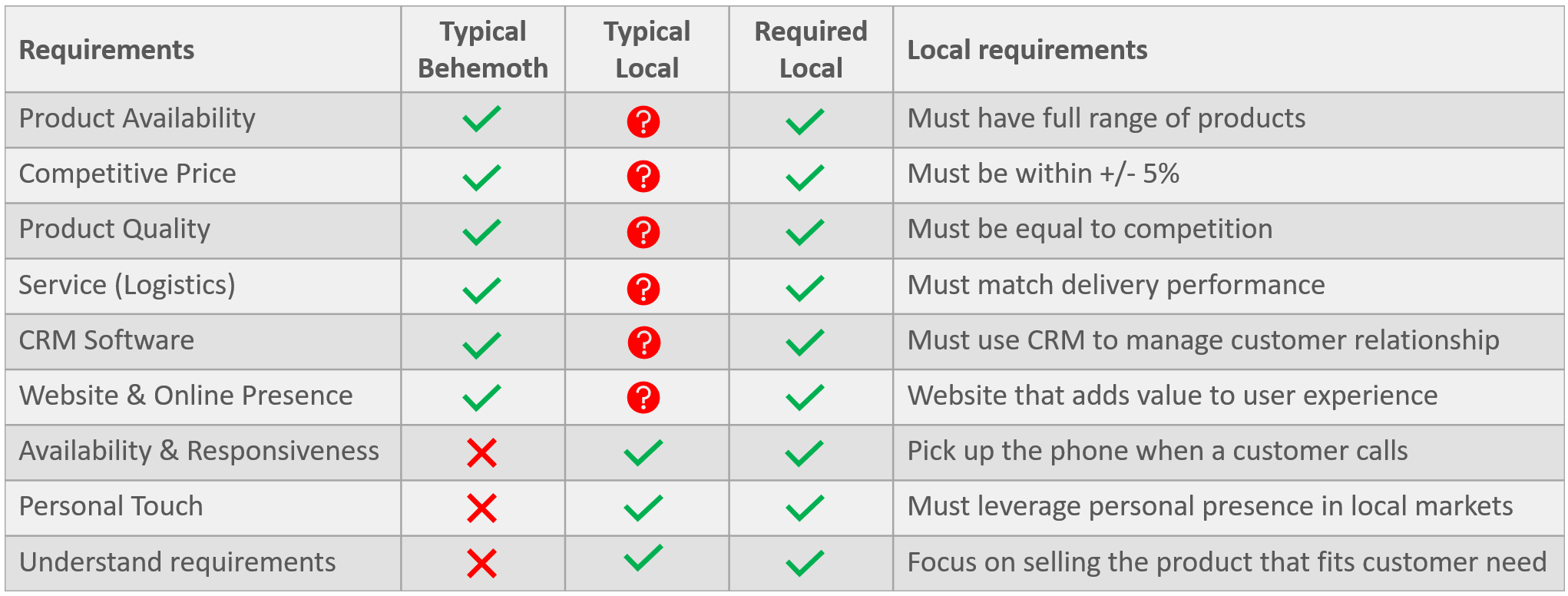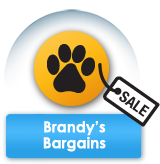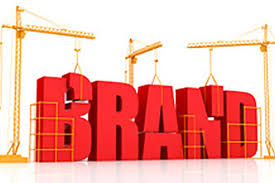Shared from Hi Tech Office Products
It seems like we’re all geared to think bigger must be better. However, the trouble is, as businesses get bigger, there are fewer alternatives. For example, many communities only have one choice when it comes to internet and cable services and, quite often, (as many of us can relate) when there’s no choice, the price increases and customer service deteriorates.
Scale can bring short-term benefits but, frequently, many of these benefits disappear as larger enterprises gain more control over their markets. Unfortunately, the competitive pressure from giant corporations can have a profound impact on the economic well-being of smaller businesses in a local market.
Back in the 1980’s, when Walmart started arriving in smaller local communities, many were excited to have convenient access to a larger range of products at lower prices. That is, until local businesses, many of which had been around for decades, started going out of business. This, in turn, led to less money being spent at Walmart (or anywhere else for that matter), and it wasn’t long before a downward spiral was set in motion. It turned out, Walmart wasn’t quite so positive for the local economy as most had initially thought it would be.
Banks are another example.
Many in smaller communities have banked with local community banks for years but, unfortunately, many get purchased by bigger banks. Then, the new owner often sets in motion a program of increased fees and hounding its new customer base with offers for financial services they’re not interested in. Adding insult to injury, it becomes common to encounter a “greeter” who challenges customers for wanting to complete any transactions inside the bank when there’s a perfectly good ATM outside! Seemingly oblivious to the fact that some customers prefer face-to-face contact, the larger banks blindly continue with their insensitive automation strategies, even as customers make it clear that’s not what they want.
It’s actions and behavior like this that local businesses must take advantage of to help reach the tipping point where a “local buy” decision is more likely to be made.
Buying local has a “multiplier” effect. This results from independent, locally owned businesses recirculating a far greater percentage of their profits locally than “absentee” owners of larger businesses headquartered elsewhere.
Spending money with locally owned businesses creates more local wealth and jobs in that community.
The argument for enterprises like Walmart improving spending power and increasing the range of consumer choice was more compelling 30 years ago than it is today. At that time, smaller local merchants simply didn’t have the means, the access, or the expertise to source and provide the type of products Walmart was able to stock its shelves with.
However, during the last 20 years, wide-scale access to the internet has changed everything and, for those smaller businesses that have taken advantage of the changes, it has become possible to level the playing field and establish comparable value propositions to those of their much larger competitors.
This is very important because, unfortunately, businesses will not do business with smaller, local businesses just because they’re local. Helping keep dollars in a local community, thereby increasing the spending power of the community members, is all very well but, very few businesses (certainly not enough to make a difference) will behave this way as an act of charity.
At a minimum, comparable performance on quality, availability, and price must be delivered before “local-buy” decisions become more likely and other incremental benefits can start to be anticipated. Benefits that include;
- A more personal level of post-sale service.
- A favorable impact from the profits resulting from local transactions being more likely to be redistributed within the local economy.
- More money available to be spent on products and services within the community.
In these circumstances, the “local-buy” decision has a multiplier effect and serves to become a virtuous cycle.
Unfortunately, in the absence of a comparable value proposition, and because businesses almost always act in their own best interests it means, when there’s a lower price with the same quality and service available from an anonymous, global enterprise, then that’s invariably the winner.
The tipping point toward a “local-buy” decision only occurs after all other factors, such as availability, quality, service, and price is deemed more or less equal.
Conclusions:
The challenge is for local businesses to develop a value proposition that equals or exceeds that of its larger competitors. A large business usually has a strong brand presence, is able to leverage its scale to negotiate the lowest costs and, quite often, has multiple, strategically located distribution centers where it stores its inventory ready for quick deliveries to any part of the nation.
On the face of it, these capabilities seem to form an insurmountable barrier for a small business to match. However, on closer examination, this is not necessarily the case.
Small businesses advantages:
- Although a small business may have higher per unit costs they also have lower overhead costs, so the overall cost disadvantage is not as large as it may first seem.
- Most are not encumbered with legacy information technology systems that are expensive to maintain and difficult to adapt.
- Most are less encumbered by red tape that often slows down decision-making and leads to missed opportunities.
- Access to products that are not available from the mainstream legacy enterprises and can therefore offer additional choices at lower prices than may be obtained through “big-box” channels.
However, in order to fully benefit from these advantages, smaller, local businesses must focus on implementing and leveraging technology to improve customer service, brand development, and to raise awareness.
These capabilities must include:
- Customer Response Management (CRM) Software.
- Online catalogs with customer specific login’s and custom pricing.
- E-commerce options with the ability to transact online.
- Advanced logistics, facilitating access to third-party inventory and customer drop-ship to avoid inventory carrying costs and risks of obsolescence.
- Consistent online local listings and “rule-compliant”, responsive websites optimized for local search results.
- Activity on relevant social media sites for brand development and audience engagement.

In implementing information technology systems, smaller local businesses become empowered to match the technological performance of much larger competitors. As they also tap into the logistics of a “virtual” inventory to broaden their offering and improve their service, they cross the the tipping point necessary to eliminate major objections typically encountered for “local buy” decisions.



 >
>



 own erroneous interpretation, or won’t think about you at all. Tell your story — don’t leave it to others to define you.
own erroneous interpretation, or won’t think about you at all. Tell your story — don’t leave it to others to define you. in the real world. Brands are responding by returning to brick-and-mortar stores, combining the service consumers expect from a physical store with the information, flexibility, and customization they get through digital. Even historically online brands are believers. Amazon just opened its first bookstore in Seattle, where customers can browse books and also read customer reviews.
in the real world. Brands are responding by returning to brick-and-mortar stores, combining the service consumers expect from a physical store with the information, flexibility, and customization they get through digital. Even historically online brands are believers. Amazon just opened its first bookstore in Seattle, where customers can browse books and also read customer reviews.
 offers. In 2016, brands will place more emphasis on training their employees to be brand ambassadors. They will also strive to be more vocal about publicizing the efforts and services they provide to create a positive work experience for employees. REI recently announced #OptOutside, an initiative where it is closing all stores on Black Friday and paying employees to spend time outside reconnecting with family and friends.
offers. In 2016, brands will place more emphasis on training their employees to be brand ambassadors. They will also strive to be more vocal about publicizing the efforts and services they provide to create a positive work experience for employees. REI recently announced #OptOutside, an initiative where it is closing all stores on Black Friday and paying employees to spend time outside reconnecting with family and friends. er before. Brands will create quicker ways to serve customers. Starbucks permits customers to order ahead so their coffee is waiting for them at the counter, while Taco Bell’s app makes fast food even faster by enabling online ordering and pickup.
er before. Brands will create quicker ways to serve customers. Starbucks permits customers to order ahead so their coffee is waiting for them at the counter, while Taco Bell’s app makes fast food even faster by enabling online ordering and pickup. ends created a new packaging concept for watchmaker Festina in which Festina’s waterproof timepieces would come sealed in bags of water. Other concepts have been developed such as the much talked-about idea for the Nike Air shoeline, placing the shoes in see-through air cushioned packets that make them appear to literally float on air. We expect to see concepts like these become reality in 2016, moving from innovative ideas to engaging packaging that helps convey brand truths.
ends created a new packaging concept for watchmaker Festina in which Festina’s waterproof timepieces would come sealed in bags of water. Other concepts have been developed such as the much talked-about idea for the Nike Air shoeline, placing the shoes in see-through air cushioned packets that make them appear to literally float on air. We expect to see concepts like these become reality in 2016, moving from innovative ideas to engaging packaging that helps convey brand truths.